If you are looking for a single board computer, then you have probably heard of the Banana Pi Pro and Raspberry Pi 2. Both of these devices are popular options, but which one is the better choice? In this article, we will compare the two devices and help you decide which one is right for you. We will cover everything from price to performance to help you make an informed decision. So, let’s get started!
Single Board Computers in General
They typically have memory and storage capabilities similar to larger desktop or laptop PCs, but they take up much less space and require fewer resources to operate.
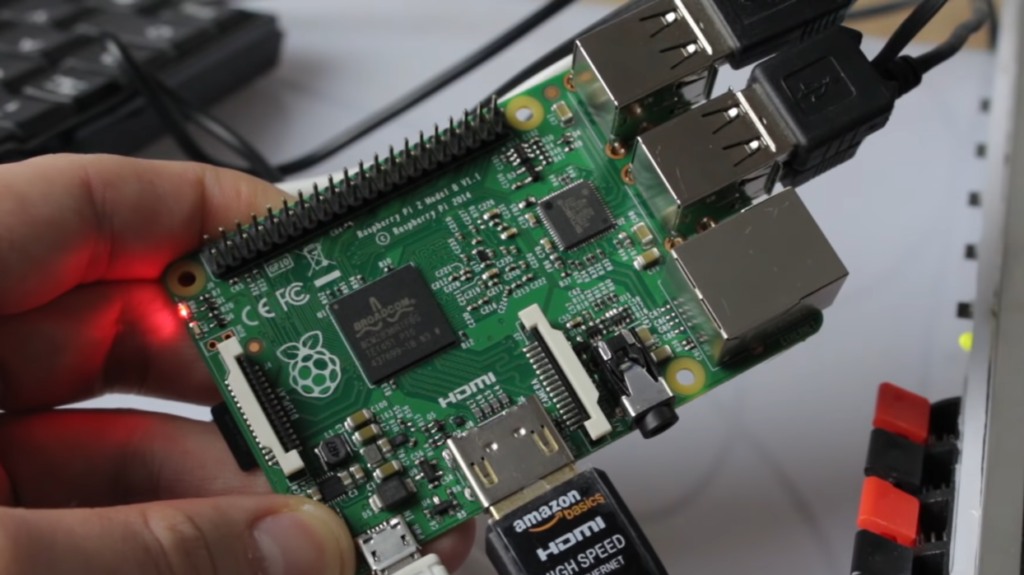
These compact devices can be used for a variety of tasks, such as running web servers, basic home automation projects, playing games and videos, digital signage, computer vision projects, and more. They are a great choice for hobbyists and professionals alike who need a powerful but compact computing device.
Two of the most popular single board computers on the market today are the Banana Pi Pro and Raspberry Pi 2. Both devices offer powerful performance and plenty of features, but which one is better?
What is Raspberry Pi 2
The Raspberry Pi (RPi) is a series of credit card-sized single-board computers developed in the UK by the Raspberry Pi Foundation. The RPi has been the go-to single board computer for countless applications since it was first released, from powering media centers to running robotics projects. Many versions of the RPi have been released over the years, with each version offering better specs than its predecessor.
Raspberry Pi 2 is a small, credit card-sized computer released by the Raspberry Pi Foundation in 2015. It was designed to be a low-cost and versatile platform for computing, allowing users to create projects with applications such as programming, building internet of things (IoT) devices, gaming consoles, media servers and more.
The Raspberry Pi 2 is powered by an Advanced Micro Devices ARM Cortex A7 900MHz quad core processor with 1GB RAM. This combination provides more power than most other single board computers on the market today. Its 10/100 Ethernet port allows for direct connection to the internet or local network while also providing support for Wi-Fi connectivity through an external USB adapter. The device has four USB ports, one HDMI port and a 3.5mm analog audio output, allowing you to connect various peripherals such as keyboards, mice, game controllers and more.
The Raspberry Pi 2 also comes with several operating systems pre-programmed into the system’s on-board flash memory including Raspbian (which is based on the Linux operating system), Windows 10 IoT Core and Ubuntu Mate. This allows users to quickly boot up their devices and start creating projects without having to install an OS manually. [1], [2], [3]
What is Banana Pi Pro
It was developed as an alternative to existing single-board computers, such as the Raspberry Pi, with the goal of providing users with a low cost and highly capable device for both hobbyist and commercial purposes.
The Banana Pi can be used for a variety of purposes including as a home media center, game console, web server, development board and more. It has many features that are similar to the Raspberry Pi but also some unique ones such as Gigabit Ethernet port, SATA port, I2S audio interface and various expansion headers.
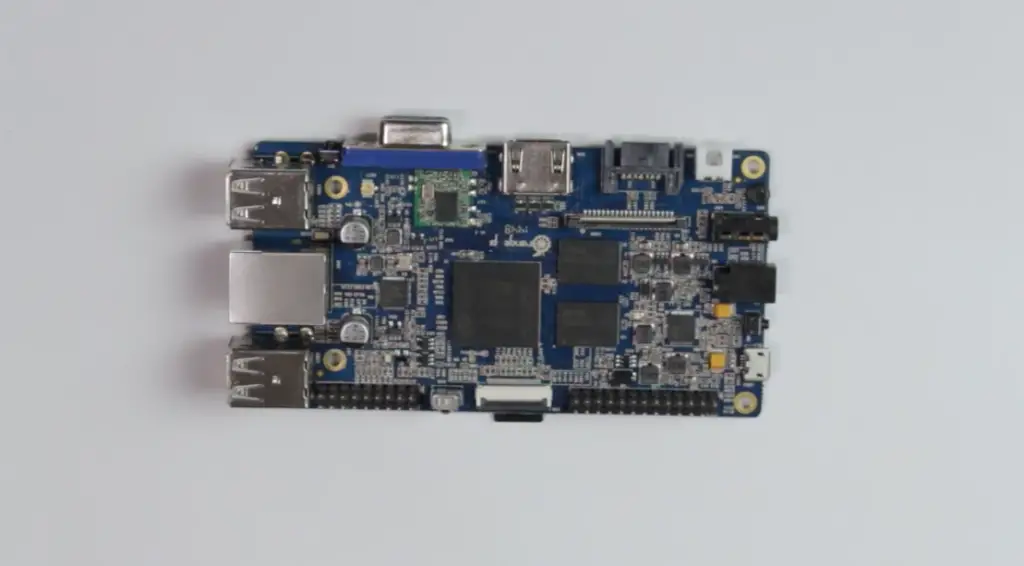
Banana Pi Pro is one of the most popular Banana Pi models. The board features a 1GHz ARM Cortex A7 processor, 1GB of RAM and has plentiful ports for external connection including USB, HDMI, Ethernet, WiFi (802.11 b/g/n) and even SATA. It also supports the Android operating system, making it ideal for creating applications based on this popular mobile platform. [1], [2], [3]
Comparison of the Both Boards
The Banana Pi Pro and the Raspberry Pi 2 both offer powerful processing capabilities in single board computer form factors. However, there are some key differences that make them better suited for different tasks. In this section we’ll take a look at the specs of the two devices and compare them.
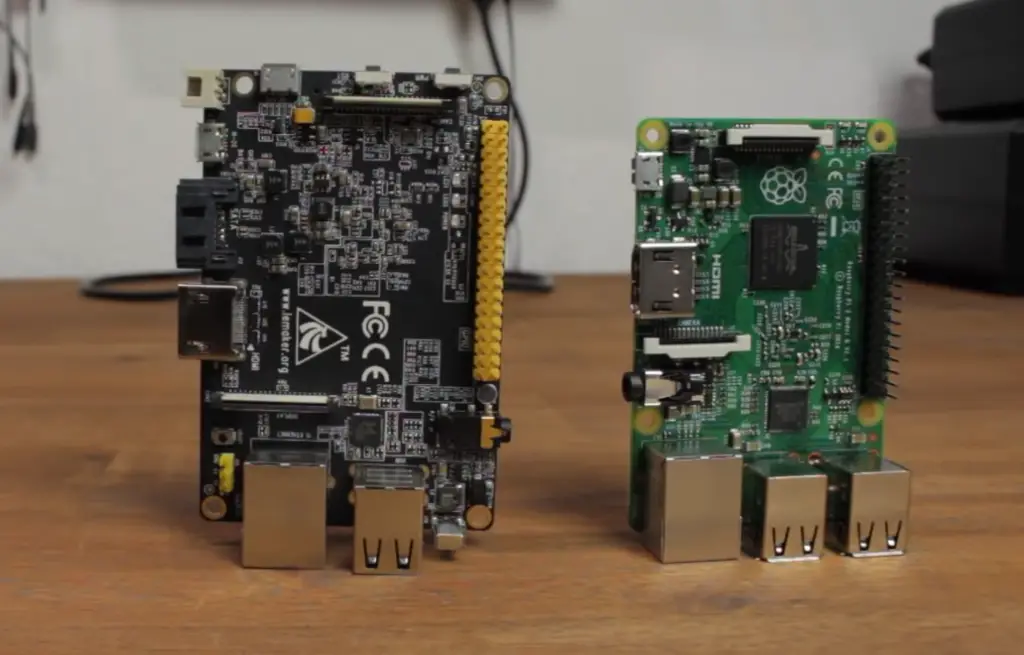
Hardware Comparison
Hardware is by far the most important aspect when comparing the Banana Pi Pro and Raspberry Pi 2. As we already mentioned, the Banana Pi Pro has a 1GHz quad-core ARM Cortex A7 processor, while the Raspberry Pi 2 is equipped with a 900MHz quad-core ARM Cortex A7 processor. Both single board computers have 1GB of RAM as well.
The two devices also differ in terms of their I/O ports. While both boards have four USB ports, an HDMI port, audio output jack, Ethernet port, CSI camera interface, 26-pin GPIO connector, and a micro-SD card slot, the Banana Pi Pro features an onboard mic and IR sensor, while the Raspberry Pi 2 has a DSI display interface.
Let’s break down the port differences even further. The IR sensor on the Banana Pi Pro can be used to control the board with a remote control, while the DSI display port on the Raspberry Pi 2 allows you to connect an LCD or OLED display directly to the board.
Power source wise, the Raspberry Pi 2 is powered by a microUSB adapter while the Banana Pi Pro works with both microUSB and a 5V/2A DC power input.
The Banana Pi Pro also has a SATA port, while the Raspberry Pi 2 does not. This allows you to connect a SATA hard drive directly to the board instead of having to use an external USB storage device.
And last thing we absolutely must point out is that Banana Pi Pro comes with built-in Wi-Fi while Raspberry Pi 2 requires an additional Wi-Fi adapter for wireless communication. This issue was sorted in later models of the Raspberry Pi, but for this case it’s a significant advantage for the Banana Pi Pro.
Software Comparison
Both single board computers run Linux operating systems, but the software support differs between them. The Banana Pi Pro supports various distributions of Debian and runs on the OG OS Bananian. Bananian is a pretty lightweight OS and includes a graphical user interface with an assortment of pre-installed applications. However, while it’s great for development, it’s not a great choice if you want a desktop experience.
Luckily, you aren’t stuck with Bananian on the Banana Pi Pro. You can also install other distributions like Ubuntu and Arch Linux, which are much more robust for desktop use. And one of the unique features of the Banana Pi Pro is that it supports Android, making it a great choice for creating multimedia devices.
The Raspberry Pi 2 on the other hand primarily runs Raspbian, an OS based off of Debian Linux. It makes use of the LXDE desktop environment and overall provides a better desktop experience than Bananian. Of course, you can also install other distributions like Ubuntu and Arch Linux on the Raspberry Pi 2 as well.

What’s more, after some tweaking, you can even make Windows 10 IoT Core run on the Raspberry Pi 2. This means you can use your Raspberry Pi to create a wide variety of projects, from basic smart home devices to cloud-enabled robots.
Ease of Use
When it comes to single board computers, nothing is more important than ease of use. Your board needs to be easily programmable and maintainable in order to make the most out of your purchase. Especially if you’re just starting out, you don’t want to be stuck learning how to fix your board every time something goes wrong.
It has an abundance of tutorials and documentation available, making it easy for beginners to figure out how things work. There are also plenty of pre-made projects available so you can get started right away without having to do much coding.
The Banana Pi Pro, on the other hand, doesn’t offer as many tutorials or project ideas. While it’s not impossible to get a basic setup up and running with the device, there’s definitely more of a learning curve than with the Raspberry Pi 2.
Pricings
When it comes to choosing between a Banana Pi Pro and a Raspberry Pi 2, one of the biggest factors to consider is price. Single board computers are great because they provide powerful computing power in a compact form factor. But that doesn’t mean you have to break the bank when buying them.
When it comes to price, the Raspberry Pi 2 is again the clear winner. It usually retails for around $35, making it one of the most affordable single board computers available. The Banana Pi Pro costs a bit more at around $50-$55, but it still offers great value for money.
Versatility
Another important factor when comparing single board computers is versatility. You want to make sure you choose a board that can be used for a variety of projects, and one which has an active community in case you ever run into any issues.
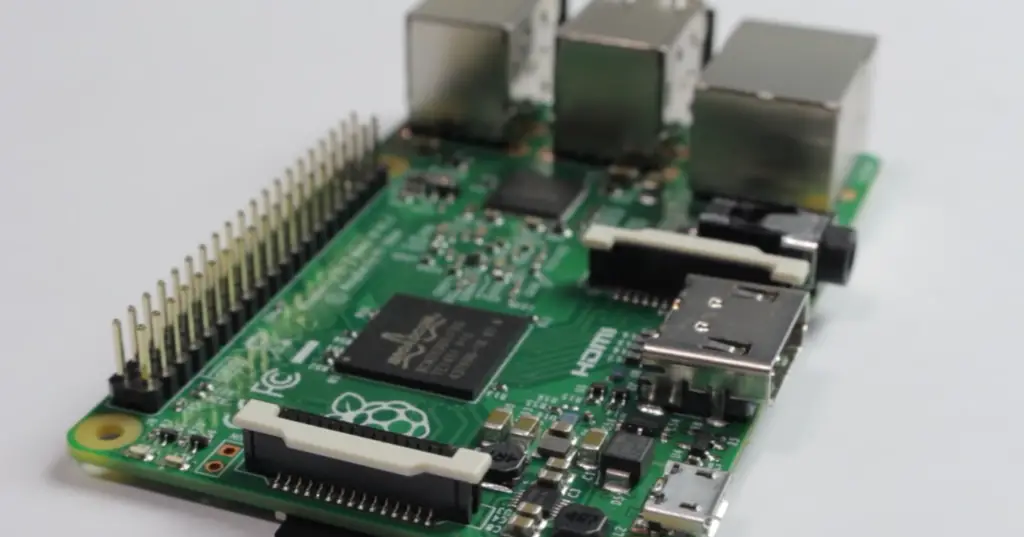
When it comes to project versatility, we believe that both boards are pretty equal. While the Raspberry Pi 2 offers a great range of features, the Banana Pi Pro is also capable of running multiple operating systems and can also be used for many different creative projects. The main difference isn’t really in terms of versatility but in terms of cost-efficiency.
There is just so much you can do with these, from creating a media server, to turning them into robots and even using them as the basis for a home automation system.
And if you’re a fan of retro gaming, both boards are capable of running popular gaming platforms such as Recalbox and RetroPie.
Community
Last important factor you should keep in mind is the SBC’s community. A vibrant and active community can be invaluable when it comes to troubleshooting issues or providing support for new projects.
The Raspberry Pi 2 has been around since 2015 and, as such, has had plenty of time to develop an impressive following. The Raspberry Pi Foundation created a forum specifically for their users that serves as a great resource for anyone looking to ask questions or find answers about the device. In addition, many Raspberry Pi enthusiasts have written detailed tutorials on how to get started with the device and how to use it in various projects.
Similarly, Banana Pi Pro also boasts an active community of developers and hobbyists who are constantly working on and sharing their projects. The Banana Pi Pro also has its own forum where users can seek advice on various topics related to the device and its capabilities. However it can’t reach the same level of support and resources as the Raspberry Pi 2, as it is a much newer device. [1], [2], [3]
FAQ
Is Banana Pi Pro better than Raspberry Pi 2?
When it comes to power and performance, Banana Pi Pro has the edge over Raspberry Pi 2. It boasts a SATA port which allows users to connect an SSD or HDD for extra storage, and its faster processor makes it a better choice for more intensive tasks like gaming. The board also comes with built-in Wi-Fi, making it easier to connect than the Raspberry Pi 2.
However, the Raspberry Pi 2 is still a great option for those who want a low-cost single board computer. It has enough power to run basic programs and applications, plus its easy compatibility with other devices makes it perfect for DIY projects. Its ARM Cortex A7 processor is not as powerful as the Banana Pi Pro’s but still offers adequate performance.
Can Banana Pi run Raspbian
Yes, you can run Raspbian on Banana Pi. The device supports a variety of operating systems including OpenSUSE, Android 4.4, Debian, Ubuntu and other Linux distributions. It is also possible to install Raspbian on the board although the process may require some additional steps to make it work properly. For example, since the processor used by Banana Pi is different from Raspberry Pi’s processor, you need to download a specific version of Raspbian that is compatible with the device’s hardware. Additionally, some modifications to the bootloader are necessary for proper execution of Raspbian on Banana Pi.
What is the most powerful Raspberry Pi?
The Raspberry Pi 4 Model B is the most powerful Raspberry Pi released to date. It features a 1.5GHz quad-core 64-bit ARM Cortex-A72 processor, up to 8GB of RAM, Gigabit Ethernet, dual monitor support and USB 3.0 connectivity. The Raspberry Pi 4 can power two full HD displays simultaneously and contains a variety of I/O ports for connecting peripherals like cameras and external storage devices.
Unlike the older versions, you can choose between different RAM configurations, depending on your needs. With the Raspberry Pi 4, you can also run multiple operating systems such as Raspbian, Ubuntu and many others.
Useful Video:Raspberry Pi 2 VS Orange Pi VS Banana Pro
Conclusion
Both the Banana Pi Pro and Raspberry Pi 2 are powerful single board computers that offer great performance for their price points. But when it comes down to it, there are some key differences between them that make one better suited for certain tasks than the other.
In terms of hardware, the Banana Pi Pro is slightly more powerful due its faster processor and SATA port, making it a great choice for more intensive tasks such as media streaming or gaming. It also has an onboard Wi-Fi module, which makes it easier to connect without the need for external hardware.
The Raspberry Pi 2’s main advantages are its solid memory and user-friendly interface, which make it better suited for education or home automation projects. In addition it also has a huge community of users who provide great support and resources.
If you plan on working on Android-based applications, the Banana Pi Pro is probably your best bet. While Raspberry Pi can run Android, the poor optimization makes it less desirable. With Banana Pi Pro, you can get a reliable system that will run your apps smoothly.
Ultimately, the decision between the two will come down to your individual needs and uses for the single board computer. If you need a powerful device that can handle more complex tasks, then the Banana Pi Pro is likely your best bet. But if you’re looking for something that’s easier to use and perfect for simple DIY projects at home, then the Raspberry Pi 2 is probably a better fit. Thanks for reading!
References
- https://pimylifeup.com/banana-pi-vs-raspberry-pi-2/
- https://www.educba.com/raspberry-pi-vs-banana-pi/
- https://www.htpcguides.com/raspberry-pi-vs-pi-2-vs-banana-pi-pro-benchmarks/





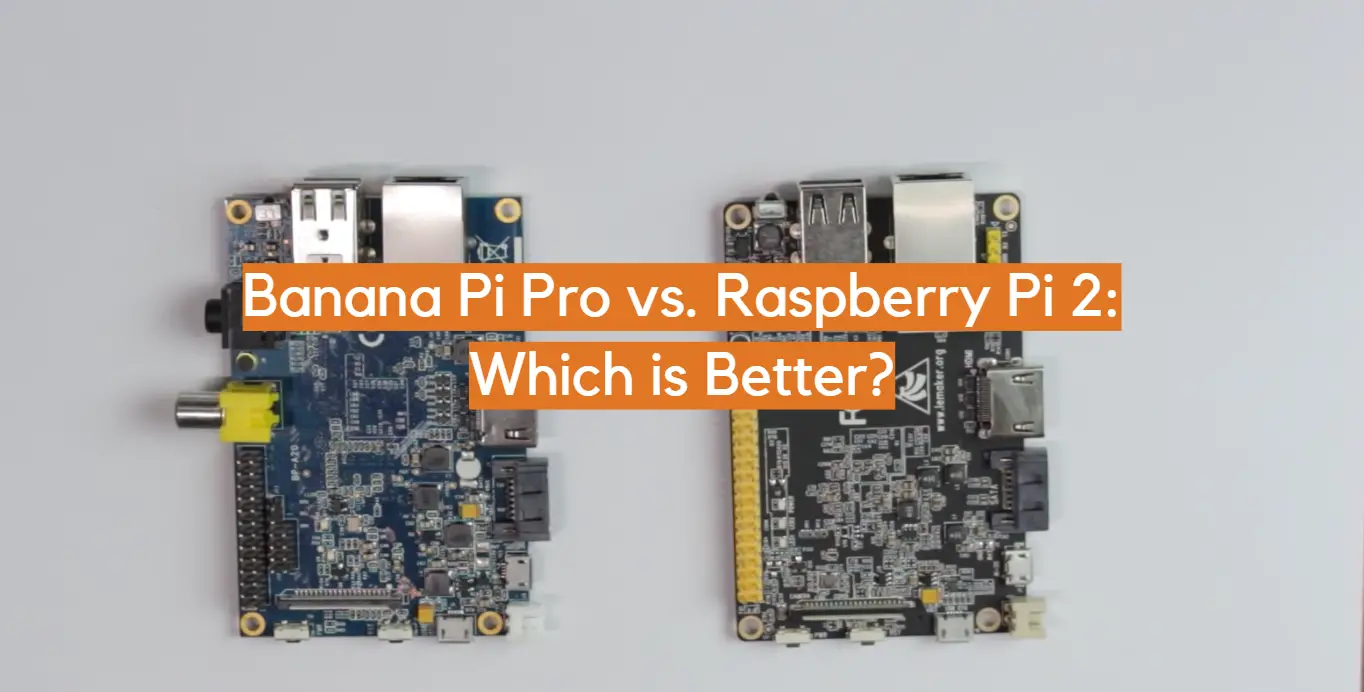







Leave a Reply